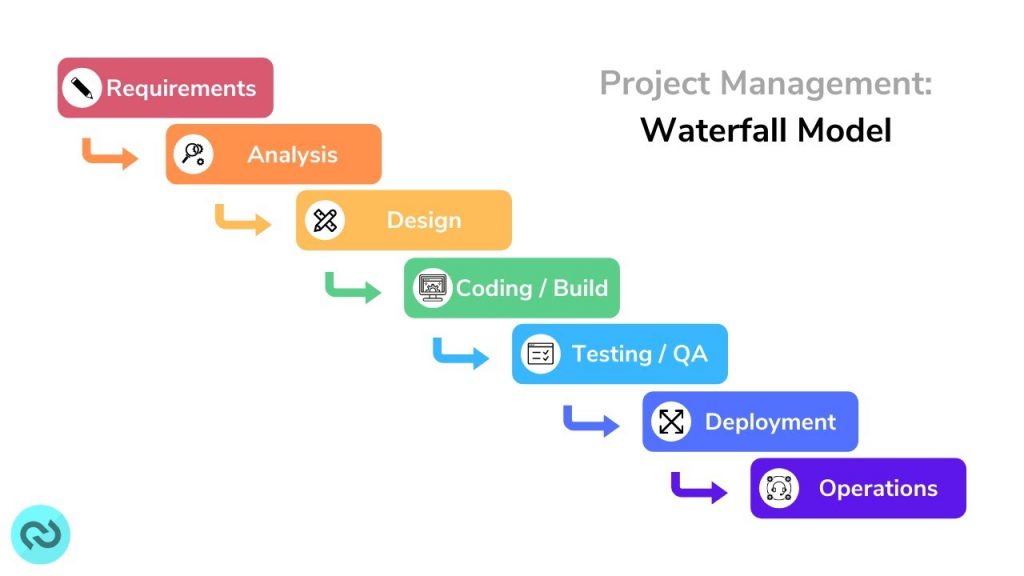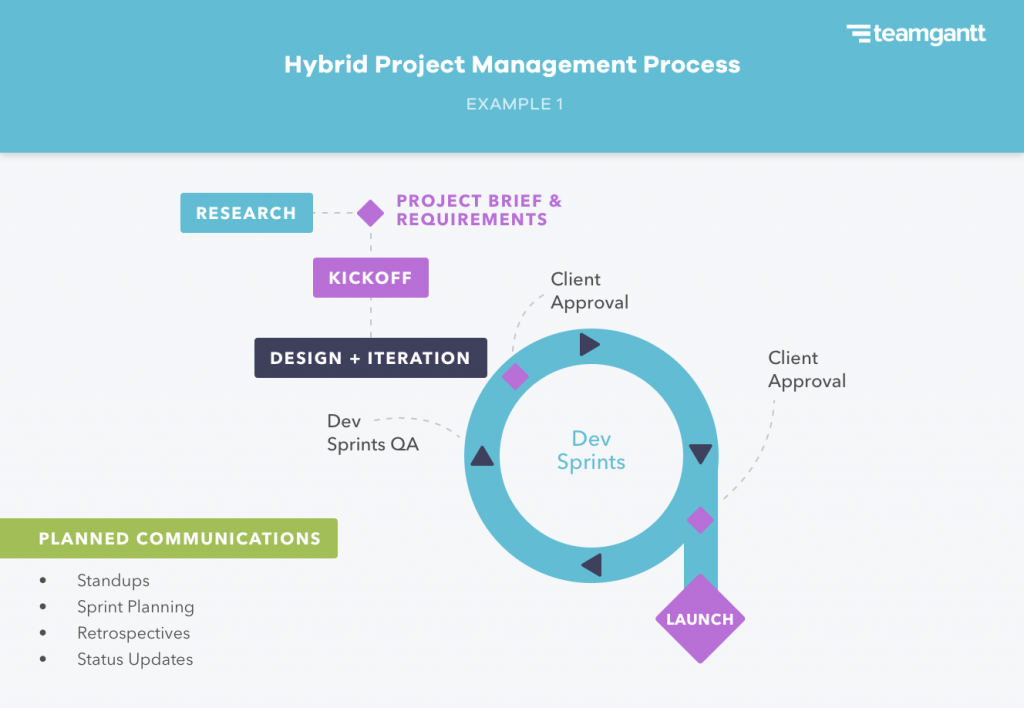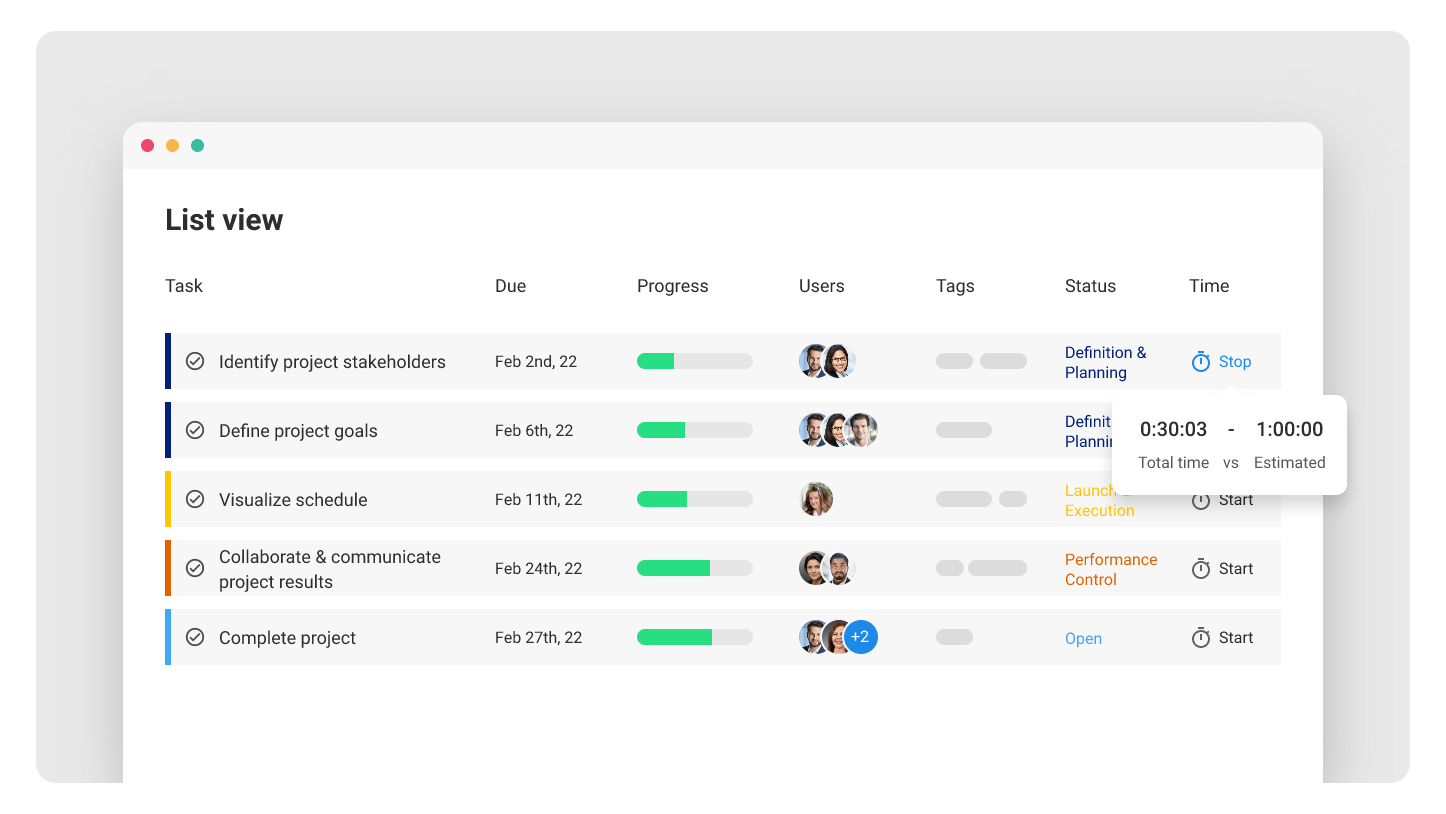In my decades overseeing diverse projects, from large-scale infrastructure deployments to nimble software sprints, I’ve seen how a mismatched approach can turn a promising project into a quagmire of frustration.
The endless debates over Hybrid vs Agile vs Waterfall are not academic; they stem from real-world pain points like scope creep, missed deadlines, and misaligned expectations that plague organizations daily.
The right methodology, however, acts as a powerful orchestrator, harmonizing complex tasks, fostering collaboration, and adapting to unforeseen challenges, ultimately leading to superior project execution.
In this guide, I’ll explain these project management methods and their nuances, strengths, and weaknesses. This will help you select the optimal approach for your next project, ensuring smoother delivery and more successful outcomes.
What Are Hybrid vs Agile vs Waterfall Approaches to Project Management?
Choosing the right project management method starts with understanding what each approach truly offers.
Here’s a clear breakdown of the hybrid agile methodology, waterfall agile hybrid project management, and agile waterfall and hybrid methodologies.
1. Agile Methodology

Image Source: Rosemet.com
Agile planning is a flexible, iterative approach to project management. It breaks the project into short cycles called sprints and emphasizes collaboration, customer feedback, and rapid adaptation.
Teams often hold daily stand-ups and deliver workable components regularly.
Example:
A SaaS company developing a mobile app uses Agile to roll out new features every two weeks.
The development team collaborates closely with the UX team and beta users, adapting based on real-time feedback.
This continuous delivery helps maintain competitiveness and user satisfaction.
Best for:
Software development, marketing campaigns, or any evolving project with unclear or changing requirements.
2. Waterfall Methodology

Image Source: Draegan Network
Waterfall is a traditional, linear approach. It divides the project into sequential phases: requirement gathering, design, implementation, testing, and maintenance.
Each phase must be completed before moving to the next.
Example:
A construction firm building a commercial office space follows Waterfall.
First, they gather architectural requirements, then proceed with planning, followed by procurement, construction, inspections, and final delivery.
Each stage must be completed before the next begins due to safety and legal standards.
Best for:
Construction, manufacturing, or projects with well-defined requirements and compliance constraints.
3. Hybrid Methodology

Image Source: Teamgantt.com
Hybrid combines elements of Agile and Waterfall. Typically, the planning and design phases follow the Waterfall model, while execution and iterations lean on Agile.
This method offers the predictability of Waterfall with the flexibility of Agile.
Example:
An enterprise software provider launches a healthcare management system. Waterfall maps the initial planning, budgeting, and compliance aspects.
However, each module (like billing, patient tracking, etc.) is developed using Agile sprints, enabling faster adjustments to client feedback.
Best for:
Large enterprise rollouts, client-facing software projects, or cross-functional teams with varying delivery needs.
Let me show you a real-life example of how Cleveland University uses a hybrid tool like ProProfs Project to track progress, meet deadlines, and stay organized:

Key Differences at a Glance
Before choosing a project management approach, it helps to view their differences side by side. This comparison table breaks down how Agile, Waterfall, and Hybrid perform across key project dimensions.
| Feature | Agile | Waterfall | Hybrid |
|---|---|---|---|
| Flexibility | High | Low | Medium |
| Planning | Evolving | Fixed upfront | Upfront + adaptive |
| Remote Team Fit | Exellent | Challenging | Strong |
| Budget Control | Variable | Predictable | Balanced |
| Risk Management | Early & often | Late-stage only | Layered |
| Stakeholder Input | Continous | Limited to phases | Periodic |
| Ideal For | Startups, software | Legal, construction | Mixed-team environments |
What Are Some Common Project Challenges & How Each Method Handles Them?
No matter your industry or team size, every project faces hurdles.
Here’s how Agile, Waterfall, and Hybrid approaches perform under pressure across some of the most common challenges in project management.
Challenge #1: Managing Remote or Hybrid Teams
- Agile supports real-time communication through daily stand-ups and tools like Kanban boards and sprint planning, making it ideal for distributed teams.
- Waterfall struggles with this unless heavily documented, as it depends on centralized planning and sequential communication.
- Hybrid allows upfront documentation (from Waterfall) but integrates Agile’s asynchronous tools to suit remote collaboration.
Pro Tip: To maintain alignment across time zones, use shared dashboards, automated notifications, and workload views.
Challenge #2: Adapting to Change
- Agile was designed for change. Teams can reprioritize tasks, adapt deliverables, and iterate quickly based on evolving needs.
- Waterfall resists mid-project changes, making it a poor fit for unpredictable environments.
- Hybrid strikes a balance—phases can remain fixed, but later cycles allow tweaks based on user or stakeholder input.
Pro Tip: When using Hybrid, build in feedback loops after each significant milestone to reassess priorities and adjust course early.
Challenge #3: Budget Constraints

- Agile allows budget flexibility, but it can be hard to forecast if the scope is unclear or keeps evolving.
- Waterfall provides firm cost projections early on, which is ideal for fixed budgets or clients requiring formal quotes.
- Hybrid offers cost clarity during initial planning while enabling updates and reallocation as the project progresses.
Pro Tip: Use time tracking and milestone-based billing to control Agile or Hybrid project costs while maintaining transparency with stakeholders.
Challenge #4: Scaling Projects or Teams

- Agile scales through frameworks like SAFe or Scrum of Scrums but may struggle in hierarchical structures.
- Waterfall scales well in terms of documentation and oversight, but can become sluggish in large teams with evolving roles.
- Hybrid provides a scalable structure with enough agility to accommodate new teams, departments, or requirements as a project grows.
Pro Tip: Start small with a Hybrid pilot team, then replicate successful patterns across departments using templates and modular workflows.
What Are the Pros & Cons for Each: Summary
Choosing the perfect project management methodology is all about trade-offs.
Here’s a quick rundown to help you weigh the benefits and limitations of each method based on your priorities.
1. Agile
Pros:
- Encourages collaboration and innovation
- Quickly adapts to new information and feedback
- Promotes early and frequent delivery.
Cons:
- Can be chaotic without discipline
- Hard to predict final costs and timeline
- May lack long-term vision without strong product management.
2. Waterfall
Pros:
- Clear roadmap and budget from the start
- Strong documentation and phase approvals
- Easier stakeholder reporting and forecasting.
Cons:
- Doesn’t accommodate mid-project changes easily
- Delayed feedback until the final stages
- Not ideal for iterative or creative projects.
3. Hybrid
Pros:
- Combines structure with flexibility
- Ideal for complex, multi-phase projects
- Adapts well to changing scopes while maintaining oversight.
Cons:
- Requires skilled project managers to balance both sides
- Can introduce complexity in managing dual frameworks
- Risk of teams pulling in different directions if not aligned.
How to Choose the Perfect Method: A Decision-Making Checklist
Still unsure which method to choose?
Use this quick checklist to evaluate which approach aligns best with your project’s goals and realities.
Which Tools Do You Need to Bring These Methodologies to Life?
Even the best methodology will fall short without the right tools. Here’s how project management platforms can support each method:
1. Agile Tools
- Kanban boards, sprint planning, and real-time collaboration
- Ideal for iterative delivery, backlog grooming, and dynamic teams
- Tools: ProProfs Project, Trello, Jira
3. Waterfall Tools
- Gantt charts, milestone trackers, and progress logs
- Support detailed planning, budgeting, and stakeholder sign-offs
- Tools: ProProfs Project, MS Project
3. Hybrid Tools
- Platforms that offer multi-view dashboards (Kanban + Gantt)
- Allow for task templates, dependencies, and workflow customization
- Tools: ProProfs Project, Monday.com, Wrike
Choose the Right Approach for Successful Project Management
Agile, Waterfall, and Hybrid are not opposing camps—they’re tools in your project management toolbox. The most efficient teams aren’t loyal to one method but know how to adapt based on the project’s needs, complexity, and constraints.
If you’re managing a fast-paced product launch, Agile might give you the edge. Running a construction project? Waterfall brings order. Coordinating multiple departments or navigating evolving requirements? A hybrid could be your best bet.
ProProfs Project helps teams adopt any of these methods with ease through ready-made templates, visual planning tools like Gantt and Kanban, and scalable features for collaboration, tracking, and reporting—all in one intuitive platform.
FREE. All Features. FOREVER!
Try our Forever FREE account with all premium features!





